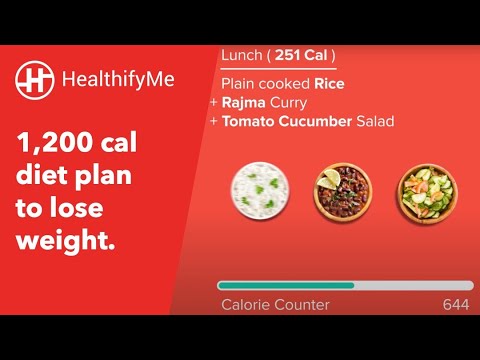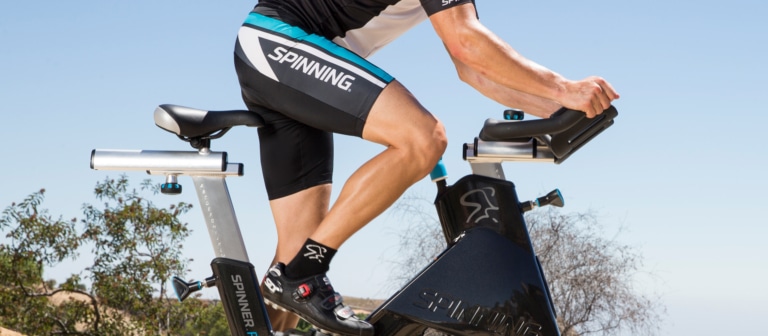
You've likely heard a lot about Gluten-Free eating. But what does it really mean? Is it healthier than a traditional low-carb diet? Is it about reducing sugar, carbs, and fiber? Are there other factors you should consider? If you're curious, read on! These are the top misconceptions surrounding the Gluten-Free Diet.
Low-carb
While it may be tempting to lose weight by cutting out grains and carbohydrates from your diet, these plans can be risky. The long-term avoidance of gluten and other processed carbohydrates can have negative effects on your health. These foods can be addictive and have few nutrients. They are also high in calories. Celiac disease patients are not advised to follow this diet. For safe weight loss, you should consume at least two to three cups of whole grains every day.
High-fat
There are many reasons to try a gluten-free diet to lose weight. For example, you may be suffering from a gluten-related disease or suspect that gluten may be contributing to your overall health problems. Before making the switch, you should consult a doctor and a nutritionist. Also, you will need to plan your weekly meals as well as calculate how many calories are lost on a gluten free diet.

High-sugar
Sugar has been added to many foods, including reduced-fat and high-fat versions. This is particularly dangerous since many of these products are mainly made from sugar. According to a recent study, most men consume a high-sugar diet. In fact, a single slice of whitebread can have four tablespoons of added sugar. Even if a person isn't diabetic, it is still possible to become obese if you eat a high-sugar diet.
Low-fiber
The general rule of thumb for choosing foods that are low in fiber is to select those that have between 2 and 3 grams of fiber per meal. Vegetables and fruits are fine, provided they do not contain seeds or skins. Because fiber is lost during cooking, cooked foods tend to be low-fiber. For weight loss, you can eat a low-fiber diet.
Low-iron
Although both the gluten-free and low iron diets have many nutritional benefits, there are also some drawbacks. Many of these foods do not contain iron, making them ineligible for people who have low iron. Iron can be lost via sweat and perspiration, but there are still some foods that provide sufficient iron. These are some to think about.
Celiac disease
Celiac disease can be treated with a gluten-free diet. This diet is safe. Your disease will not have an impact on the amount of protein or calories you consume. A gluten-free diet does not affect your body's BMI, but it may increase your risk of developing metabolic syndrome, a group of diseases that increase your risk of type 2 diabetes, heart disease, and stroke. Further research is necessary to determine the exact relationship between gluten-free diets, metabolic syndrome, and other diseases. As with all matters, it is important to discuss your diet plan and concerns with your healthcare provider.

SAD diet
Following a SAD diet for weight loss can be dangerous. This can have many negative effects on your mental and physical health. SAD diets can increase your risk of developing heart disease and diabetes, as well as altering your gut microbiome. They can also affect your energy levels and impact your ability to absorb nutrients. You will likely feel more tired and drowsy, which can make it difficult to focus. Luckily, there are a number of ways to make healthy food choices without depriving yourself.
FAQ
How to Create an Exercise Routine?
First, create a routine. You need to know what you will do each day and how long you will spend doing it. This helps you plan and prevents procrastination.
You should also ensure you have plenty to choose from when working out. You don't want to become bored with exercise because then you won't stick with it.
You should also keep track of how you are progressing. It is important to keep track of how much weight you have lost and gained over time.
You can lose weight quickly if you do not gain weight. On the other hand, if you gain too much weight, it becomes harder to stay motivated.
You should find a balance between weight gain and weight loss. You'll find it harder to exercise if you don't like where you are at the moment.
What should I eat when I fast intermittently to lose weight
You can lose weight by cutting out carbs. This means avoiding bread, pasta, rice and potatoes as well as other carbohydrate-based foods.
Because it makes you feel fuller, you'll want to limit your intake of protein. So you won’t feel hungry as often.
Focus instead on foods high in healthy fats such olive oil and avocado, as well as nuts and seeds. These foods keep you satisfied even after hours of eating.
It's vital that you get enough water. Water is important for your body's ability to stay hydrated and helps you burn more fat.
It is possible that you will find yourself craving these foods while you are fasting. But that doesn't mean you have to give in to those cravings. You could gain more weight than what you lose if you do.
To prevent overeating, try keeping an eye on how much you consume throughout the day. Drink a glass water whenever you feel hungry.
It might sound counterintuitive at first, but it has been shown that this can help you slim down. According to a study published in Obesity, participants consumed fewer calories if they drank plain water rather than sugary beverages.
Drinking plain water also reduced hunger. So if you really want to lose weight, skip the sweetened beverages and stick to water.
If you want to lose weight, you don't need to count every calorie or deprive yourself of certain foods. Instead, you should make small lifestyle changes.
You can swap your breakfast sandwich for an oatmeal bowl. You can also swap out your afternoon cookie for a piece fruit.
These easy changes can help you lose weight and keep your kitchen clean.
What is the best time to do Intermittent fasting in order to lose weight
The answer is not as simple as you might think. There are many factors that need to be taken into consideration when deciding how many days of fasting is necessary for optimal fat loss. These include:
-
Your age. If you are younger than 40, intermittent fasting might be too difficult because you have less time for recovery after each fast. You may not have enough energy for a sustained period of daily fasting if you are older (over 60).
-
Your current body composition. Longer periods of fasting are more beneficial if you have a lot muscle mass. If you don't have a lot of muscle mass, shorter fasting periods may be more suitable.
-
How physically active you are. To ensure adequate rest between workouts, you might need to extend your fasting period if you exercise frequently.
-
Your health history. Additional fasting monitoring may be required for certain medical conditions such as diabetes or heart disease.
-
How can you manage stress? Stress can often lead to us eating more. To avoid this problem, you may need to increase the length of your fasting windows.
-
It is the type of diet you are following. Certain diets, like ketogenic diets, may require even longer fasting periods.
-
Your quality of sleep. The quality of your sleep is also a factor in increased appetite and decreased metabolism. It may take some trial and error before you find the right combination.
-
How much protein you eat. A higher intake of protein may result in lower blood sugar levels. This would allow one to fast for longer periods.
-
People who want to gain weight or lose it will need to fast for longer periods of time than those trying to lose.
-
What percent of your daily calories are you consuming during your fasting time? Fasting for fewer calories per days may lead to greater fat loss than fasting with more calories.
-
Your overall fitness. People who are fit and fast burn more calories per day.
-
Your gender. Men tend to have greater appetites that women, so they may need a longer fast. Women are more likely to have smaller appetites and may need to fast only 20-30 minutes every day.
-
Your lifestyle. Are you someone who is active? Are you able to exercise several times per week? Does your job involve sitting at a desk all day long? All these factors can have an impact on how much time you should speed.
-
How much do you spend per month on food? You don't have to spend much on groceries to eat healthy food. Whole grains are better than white bread and whole fruits are better than candy bars. Lean meats can also be saved.
-
You need to be able to control your hunger. You might not have to fast as much if your hunger isn't a problem.
What foods help me lose more weight?
Consuming fewer calories is a great way to lose weight quickly. Two ways to achieve this are:
-
Reduce the number of calories you take in daily.
-
Get more exercise to increase your metabolism.
It is easy to reduce calories. Everywhere you turn, there are many calorie-dense fast foods. But, here's a list of foods that will help you shed those extra pounds.
-
Beans contain high levels of fiber and protein. They are low in calories, so they're a good choice for people who want to lower their caloric intake.
-
Oatmeal contains low calories and high amounts of nutrients like magnesium, potassium, and other nutrients. It also has less sugar than most other cereals.
-
Eggs are high on cholesterol and protein. Eaten eggs one or two times a week can help boost metabolism and allow you to burn more calories.
-
Whole grain bread is known to decrease hunger pangs and make you feel fuller for longer periods of time.
-
Dark chocolate is rich in antioxidants and flavonoids. These substances have been shown to improve heart health and lower blood pressure.
-
Cottage cheese is high in calcium, which helps to build strong bones. Cottage cheese also contains vitamin D, which can boost immunity.
-
Omega-3 fatty Acids are a key component of salmon. They promote brain development, and improve cardiovascular function.
-
Green tea is full of catechins which are compounds that increase metabolism and fight cancer.
-
Broccoli is rich in folic Acid, which lowers homocysteine blood levels. Homocysteine high levels are associated with increased heart disease risk and stroke.
-
Yogurt can be a great way for you to get probiotics without having to eat a lot of sugar. Probiotics can help improve digestive health.
-
Berries are a tasty snack that is also nutritious. Blueberries, strawberries, blackberries, raspberries, and cranberries are all excellent sources of vitamins and minerals.
-
Avocados are bursting with healthy fats. A half avocado has 80 calories but plenty of filling fiber.
-
Nuts can be enjoyed as a snack, but they are also rich in protein. Almonds, cashews, hazelnuts, pecans, walnuts, and pistachios are all great choices.
-
Sweet potatoes are another starchy vegetable that's packed with beta carotene, which makes your skin glow. Orange sweet potatoes have a higher amount of beta carotene that regular sweet potatoes.
Statistics
- According to Harvard Health, it's estimated that a 155-pound (70-kg) person burns around 167 calories per 30 minutes of walking at a moderate pace of 4 mph (6.4 km/h) (5). (healthline.com)
- It's estimated that half of all American adults attempt to lose weight every year (1Trusted (healthline.com)
- A 12-week study in 20 women with obesity found that walking for 50–70 minutes 3 times per week reduced body fat and waist circumference by an average of 1.5% and 1.1 inches (2.8 cm), respectively (healthline.com)
- According to a study sponsored by the American Council on Exercise, a person weighing around 140 pounds (64 kg) would burn 108 calories at a 30-minute beginner's Pilates class or 168 calories at an advanced class of the same duration (26). (healthline.com)
External Links
How To
How to lose weight fast and not need to exercise
You can lose weight quickly by eating less calories than what you burn. This will cause your body to start burning fat stores for energy. You will see some muscle shrinkage if your body doesn't consume enough calories. You can still lose weight if you don't work out while dieting, but you'll probably lose even more muscle mass.
The key to losing weight fast without working out is to reduce your calorie intake. Many people believe that they need to reduce their food intake in order to lose weight. However, this is not true. To lose weight, you need to ensure that you are consuming fewer calories than your body is burning. So what should you be eating each day? It depends on how much you exercise each day. For example, someone who walks 3 miles daily would only need around 2,500 calories daily. One who sits at the desk all day would require 1,600 calories daily. An individual who exercises, like lifting weights, would consume around 2,000 calories each day.
To lose excess weight, you need to cut back on your caloric intake. Many people think that they should eat less food because they feel like they're starving themselves. This is not true. Your body doesn’t care if you’re hungry or full; it simply wants to work properly. To get rid of extra pounds, you need to keep track of your calorie consumption. Many apps are available online that can help you monitor your calorie intake. MyFitnessPal (Calorie Counter), and LoseIt are just a few of the many apps available online.